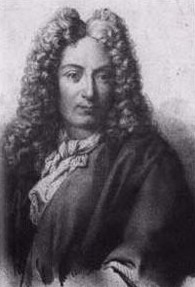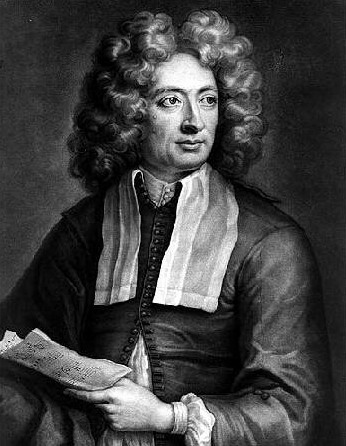
Archangelo Corelli
Archangelo Corelli was a 17th century Italian composer. Arcangelo Corelli was born at Fusignano, in the current-day province of Ravenna. Little is known about his early life. His master on the violin was Giovanni Battista Bassani. Matteo Simonelli, the well-known singer of the pope's chapel, taught him composition.
His first major success was gained in Paris at the age of nineteen, and to this he owed his European reputation. From Paris, Corelli went to Germany. In 1681 he was in the service of the electoral prince of Bavaria; between 1680 and 1685 he spent a considerable time in the house of his friend and fellow violinist-composer Cristiano Farinelli (believed to be the uncle of the celebrated castrato Farinelli).
In 1685 Corelli was in Rome, where he led the festival performances of music for Queen Christina of Sweden and he was also a favorite of Cardinal Pietro Ottoboni, grand-nephew of another Cardinal Pietro Ottoboni who in 1689 became Pope Alexander VIII). From 1689 to 1690 he was in Modena; the Duke of Modena was generous to him. In 1708 he returned to Rome, living in the palace of Cardinal Ottoboni. His visit to Naples, at the invitation of the king, took place in the same year.
The style of execution introduced by Corelli and preserved by his pupils, such as Francesco Geminiani, Pietro Locatelli, and many others, was of vital importance for the development of violin playing. It has been said that the paths of all of the famous violinist-composers of 18th-century Italy lead to Arcangelo Corelli who was their "iconic point of reference." (Toussaint Loviko, in the program notes to Italian Violin Concertos, Veritas, 2003).

Archangelo Corelli
However, Corelli used only a limited portion of his instrument's capabilities. This may be seen from his writings; the parts for violin never proceed above D on the highest string, the highest note in the third position, The story has been told and retold that Corelli refused to play a passage which extended to A in altissimo in the overture to Handel's oratorio il Trionfo del Tempo e Disinganno (premiered in Rome, 1708), and took serious offence when the composer played the note. (Handel worked with Corelli in Rome in the first couple of decades of the 18th century).
Nevertheless, his compositions for the instrument mark an epoch in the history of chamber music. His influence was not confined to his own country. Johann Sebastian Bach studied the works of Corelli and based an organ fugue (BWV 579) on Corelli's Opus 3 of 1689.

Archangelo Corelli
Musical society in Rome also owed much to Corelli. He was received in the highest circles of the aristocracy, and for a long time presided at the celebrated Monday concerts in the palace of Cardinal Ottoboni.
His compositions are distinguished by a beautiful flow of melody and by a mannerly treatment of the accompanying parts, which he is justly said to have liberated from the strict rules of counterpoint.
Today, there are few known portraits of this great composer in existence; however, the possibilities for some surfacing are excellent. Still wondering about a musician's portrait in your family collection? Contact us...it could be a portrait of Archangelo Corelli.
